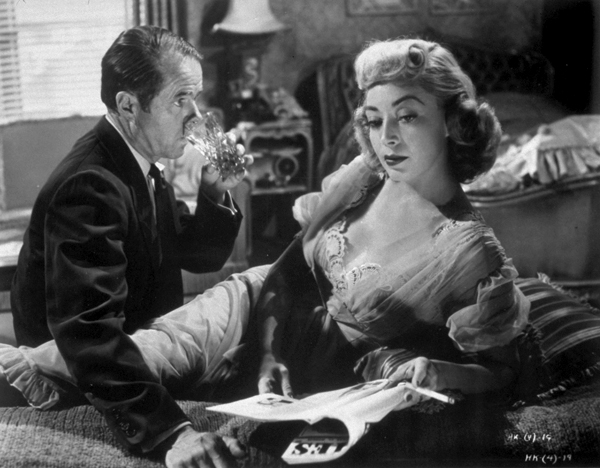|
Reviews of Recent Independent, Foreign, & Documentary Films in Theaters and DVD/Home Video

THE KILLING (1956)
Killer’s Kiss, a bare-bones and down and dirty film noir, is nominally about Davey, a boxer, who loses the big fight. What’s really on his mind during the bout is Gloria (Irene Kane), the dance hall girl who lives across the air shaft of his Bronx’s apartment building. When he sees her through his bedroom window getting harassed by a thug (Frank Silvera), he steps in to help, and in the process is drawn into her affections. When she’s kidnapped by the same thug, Davey searches for her in the dangerous side streets and alleys of Manhattan. He wants to quit the ring and head back to his hometown, hopefully with Gloria joining him. As I watched it again for the first time in years, I knew I wasn’t seeing anything of a landmark caliber. This is not an actors’ kind of movie. In fact, Kane’s dialog was dubbed later when she couldn’t be found (radio actress Peggy Lobbin, sounding like a bland commercial voice-over, is her replacement), and it’s a pretty weak story throughout. On occasion, that’s to its advantage as Kubrick’s modus operandi is to favor dialog-free scenes. On the other hand, the long stretch of Gloria narrating her family’s history is (intentionally?) awkwardly read and written. (Briefly, Kubrick’s first wife, Ruth Sobotka, appears as her ballerina-older sister.) However, what makes Killer’s Kiss highly interesting is how the director approaches the material and what he adds to what else would be a low-grade B-noir. Working with a cheap budget, he shot it in his own experimental fashion, which includes a dream sequence shot in negative stock, and a shot roaming down a street gives one an early impression of the Jupiter sequence from 2001: A Space Odyssey. That he was so young when he made this adds a special little touch. College kids and amateur filmmakers could look at this and feel inspired, despite it being nearly half a century since it was made for about $50,000 dollars. Using the neon-lit streets of Broadway and Times Square of 1954, darkened side streets, and rooftops as his landscapes, Kubrick paints a vivid backdrop for his characters, who feel both large and small in the spaces. In other words, he shoots a chase scene with the kind of grandiosity of a German expressionist film. Ultimately, the film is one of his lesser works, too short to be substantive and limited by its writing, but it’s fascinating to watch as Kubrick makes the transition from still photography to storytelling (and, as producer James B. Harris says on the DVD, the film does have a “beginning, middle and end,” which impressed Harris enough to initially collaborate with the director). At the age of 27, Kubrick took on Lionel White’s hard-boiled, non-linear novel, Clean Break, for this third film, The Killing, in which ex-con Johnny Clay (played with quick-talking, straightforward ease by Sterling Hayden) reunites with his old gang to plan and execute a racetrack robbery. By this time Kubrick intently defined his style—with a pulpy literary boost by writer Jim Thompson (The Killer Inside Me)—and the film has themes and characters that are identifiable (and recognizable) within any period. The unpretentious storytelling is always assured, and shadows are so deeply drawn in some scenes that you can feel the atmosphere coming out of its pores. Further, the supporting characters, including juicy roles for character actor legends like Elisha Cook and Timothy Carey, are sharply drawn and psychologically involving, if not more so than Johnny. Some may remark that the narration, the kind of B-movie police drama exposition, is sometimes irritating and that it’s too much. Seeing the film again, I could see what Kubrick was intending: it’s supposed to sound like a procedural, though sometimes facts aren’t consistent. (Originally, Kubrick didn’t want to put the narration in but was forced to by the distributor.) This made it a little distracting on the first viewing. However, this film demands undivided attention for its 83 minutes, and if you turn away for too long, a piece of the puzzle will be out of sight. It’s a great film, and it’s gone on to inspire a flock of imitators, only a small handful as clever and hard edged.
DVD Extras: In his commentary, critic Geoffrey O’Brian praises the low-budget “charms” of Killer’s Kiss and singles it out as one of the few times Kubrick wasn’t such a perfectionist and let mistakes remain in the movie. Poet and author Robert Polito delves into Jim Thompson’s relationship with Kubrick during The Killing and its follow-up, Paths of Glory. And in a 20-minute interview from 1984, the gruff Sterling Hayden self-deprecatingly dissects his career, his regrets during the communists witch hunts, and his work on The Killing, Dr. Strangelove, and other films. His straightforward manner and dry delivery make it a must-see. Producer Harris is also interviewed, giving the basic background on his collaborations with Kubrick over the course of three feature films (including Paths and Lolita).
Jack Gattanella
|

